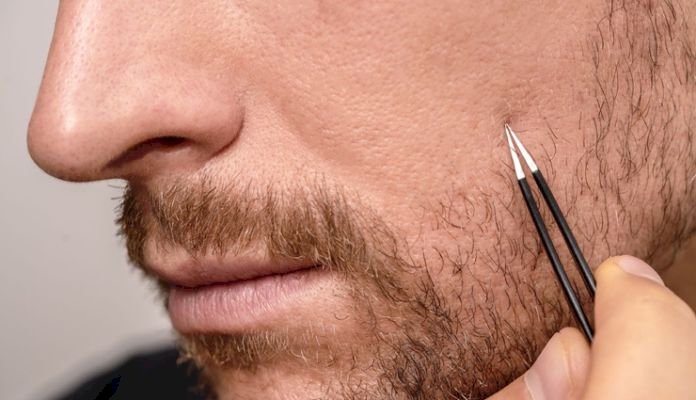Here Is How You Should Deal With An Ingrown Hair- Part 1
What do you need to know about ingrown hair? Also here are some solutions for it. Make sure you are relaxed about the condition.

Introducing Ingrown Hair
Being painful and a nuisance is an ingrown hair. It can become infected if left untreated as they typically affect people with thick, curly hair. The question here is how should they be treated as well as how can they be prevented?
Though there are times when a visit to the doctor may be appropriate, preventing ingrown hairs can often be managed at home.
To reduce discomfort for people who experience them, the article explores ways to treat and prevent ingrown hairs.
What Are Ingrown Hairs?
If they are not treated, ingrown hairs can appear anywhere on the body and may become infected.
Instead of growing out of the skin’s surface, ingrown hair is hair that has curled back into the skin. In people with thick, coarse, or curly hair types is this most common. Known as “pseudofolliculitis barbae” is the ingrown hair medically.
Occurring anywhere on the body is ingrown hair. Including the following, ingrown hairs commonly occur in areas where the skin is shaved or subject to a lot of friction:
beard
legs
underarms
chest
pubic area
Ingrown hair has the following signs and symptoms:
itching skin or irritation surrounding the hair
rashes
razor burn
Which may begin to look like a pimple, the site of the ingrown hair forms into a raised bump on the skin. Filled with pus, the bump will often turn reddish, becoming irritated and sensitive.
What Causes Ingrown Hairs?
It is usually for one of the following reasons that anything does not let the hair grown normally causing ingrown hairs:
Improper Hair Removal
Improper shaving technique is the most common cause of ingrown hairs.
Creating a very sharp tip on the end of each of the hairs is cutting hair very close to the skin.
Without a problem, most of these hairs will grow back out. Growing into the skin, however, some hairs can curl back on themselves. Causing inflammation which is the typical symptom of ingrown hair, when this happens, the body responds to the hair as if it were an intruder.
The only way that ingrown hairs occur is not shaving alone. Commonly causing ingrown hairs is waxing and plucking hairs out.
Through the follicle, plucked hair grows back. Before turning and clogging the follicle, as such it may not make it all the way to the surface of the skin.
Clogged Follicles
To become clogged, the following is also possible:
dead skin
dirt and debris.
Causing ingrown hair, when this happens, the hair follicle can become stuck or grown sideways into the skin. The hair can be seen growing under the surface of the skin in some cases.
Friction
Also causing ingrown hairs is the friction caused by wearing tight clothing for extended periods of time.
Rubbing hairs against the skin continuously is the friction caused by body movement throughout the day. Pushing back into the follicle is this causing the hairs to turn around.
How To Treat An Ingrown Hair At Home?
Most of the time they can easily be treated in the home as ingrown hairs are irritating.
A warm washcloth or soft toothbrush is used.
Rubbing in a circular motion may help to uncurl the hair by applying a warm washcloth to the ingrown hair.
There are other methods people may want to try if waiting it out is not an option. Using a warm washcloth and soft toothbrush, hairs that have grown back into the follicle can be gently coaxed out.
Apply it to the ingrown hair to warm and relax the pores and follicles after soaking a washcloth in warm water. Helping uncurl the hair is rubbing the washcloth in a gentle circular motion.
Rubbing a very soft toothbrush in a similar motion over the area surely helps unclog the follicle releasing the trapped hair if it does not work.
Avoiding Irritation
Stopping doing things that may irritate it is the first step to treating ingrown hair. Around the ingrown hair, people may need to stop shaving, waxing, or plucking the area.
It also should be avoided when scratching an itchy ingrowing hair. To avoid friction, also, people should wear loose clothing in areas surrounding the hair.
To make the ingrown hairs go away on their own, these simple practices are often enough. It will usually release itself from the follicle when a hair grows to about 10 millimeters in length.
The Concluding Words
With the help of these tips, you can get a permanent solution for ingrown hair. So be assured you can find a way out of this situation.
What's Your Reaction?





















